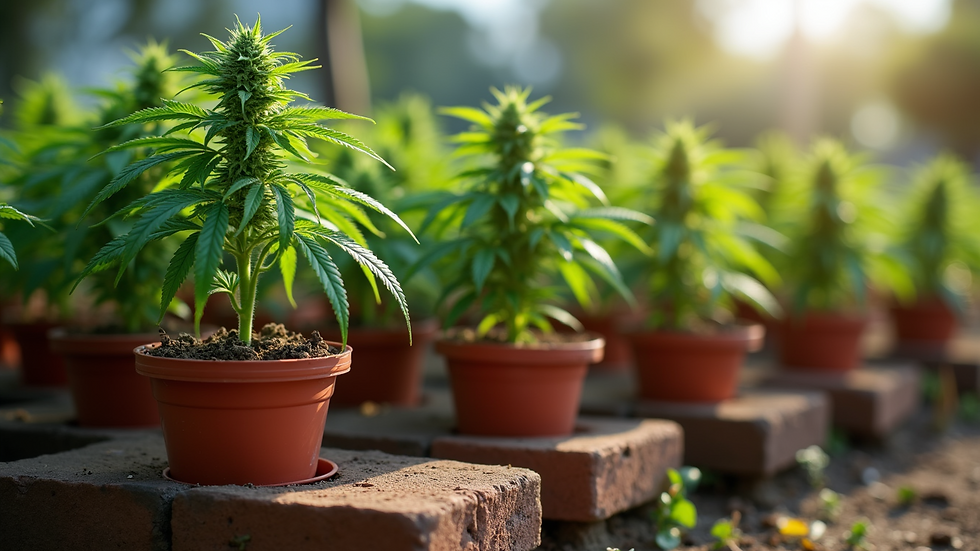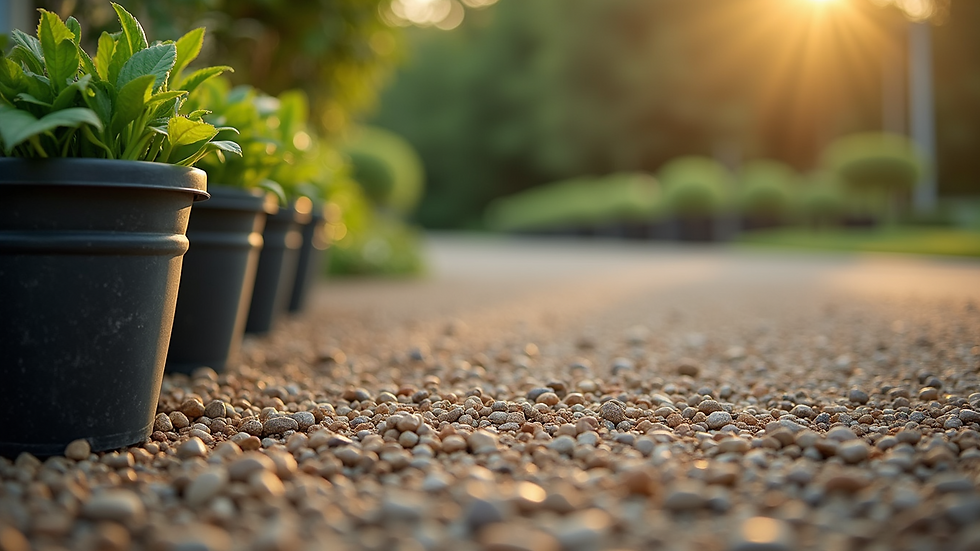Importance of Proper Plant Pot Drainage
- Jacob Correia
- Oct 7
- 4 min read
Proper drainage is a critical factor in growing healthy cannabis plants. Without it, roots can become waterlogged, leading to root rot and other issues that stunt growth or kill the plant. Whether you are a beginner or an experienced grower, understanding how to manage water flow in your pots can make a significant difference in your cultivation success.
Why Cannabis Pot Drainage Tips Matter
Good drainage ensures excess water escapes from the pot, preventing soil saturation. Cannabis roots need oxygen to thrive, and standing water cuts off air supply, suffocating roots. This can cause yellowing leaves, slow growth, and vulnerability to diseases.
Key reasons drainage is important:
Prevents root rot by avoiding waterlogged soil
Maintains proper oxygen levels in the root zone
Helps regulate soil nutrient balance
Encourages healthy root development and stronger plants
For example, a grower using pots without drainage holes might notice their plants wilting despite frequent watering. This is often a sign of poor drainage causing root stress.

Close-up view of cannabis plant roots thriving in well-drained soil
Practical Cannabis Pot Drainage Tips for Every Grower
To optimize drainage, consider these practical tips:
Choose pots with drainage holes - Always select containers with multiple holes at the bottom to allow water to escape freely.
Use well-draining soil mixes - Incorporate perlite, vermiculite, or coco coir to improve aeration and drainage.
Elevate pots - Place pots on pot feet, bricks, or trays with ridges to prevent holes from sitting directly on flat surfaces, which can block drainage.
Avoid overwatering - Water only when the top inch of soil feels dry to the touch. Overwatering is a common mistake that leads to poor drainage issues.
Consider self-watering pots carefully - These can be useful but must be monitored to avoid waterlogging.
By following these tips, you create an environment where cannabis roots can access both water and oxygen, promoting vigorous growth and higher yields.

Eye-level view of cannabis pots elevated on bricks to improve drainage
What do you put in the bottom of a planter with drainage holes?
Many growers wonder if adding materials at the bottom of a planter helps drainage. The answer is yes, but with some caveats.
Common materials used include:
Gravel or small stones: These create a space for water to collect below the soil, preventing saturation.
Broken pottery shards: These can improve drainage channels but should be clean and free of chemicals.
Perlite or coarse sand: Mixed into the soil or placed at the bottom to enhance water flow.
However, it is important not to rely solely on these materials. The soil mix and pot design play a bigger role in drainage. Simply adding gravel at the bottom without proper soil can create a perched water table, where water sits above the gravel layer and still saturates roots.
Best practice: Use a well-draining soil mix and ensure your pot has adequate drainage holes. Adding a thin layer of gravel or stones can help but is not a substitute for good soil and pot choice.

High angle view of planter bottom with gravel layer to aid drainage
How to Check if Your Cannabis Pot Drainage is Working
Monitoring your plant’s health and soil moisture is the best way to know if drainage is effective.
Signs of good drainage:
Water flows freely out of the pot after watering
Soil dries out evenly between waterings
Roots appear white and healthy when inspected
Plants show vibrant green leaves and steady growth
Signs of poor drainage:
Water pools on the soil surface or around the pot base
Soil remains soggy for days after watering
Leaves turn yellow or wilt despite moist soil
Roots look brown, mushy, or smell foul
To test drainage, water your plant thoroughly and observe how quickly water exits the pot. If water sits stagnant, consider repotting with better soil or a pot with more drainage holes.
Enhancing Drainage for Outdoor and Indoor Cannabis Cultivation
Drainage needs can vary depending on whether you grow indoors or outdoors.
Outdoor tips:
Use raised beds or containers with ample drainage holes
Avoid placing pots directly on compacted soil or concrete
Mulch around pots to regulate moisture but keep it away from drainage holes
Indoor tips:
Use trays to catch excess water but empty them regularly
Elevate pots on stands or mesh to keep drainage holes clear
Choose lightweight, breathable pots like fabric grow bags for better aeration
By tailoring drainage strategies to your growing environment, you can prevent common problems and support healthy cannabis growth year-round.
Proper plant pot drainage is a foundational aspect of successful cannabis cultivation. It protects roots, supports nutrient uptake, and ultimately leads to stronger, more productive plants. Whether you are starting with seedlings or managing mature plants, paying attention to drainage will pay off in healthier growth and better yields. Implement these tips today to give your cannabis garden the best chance to thrive.




Comments